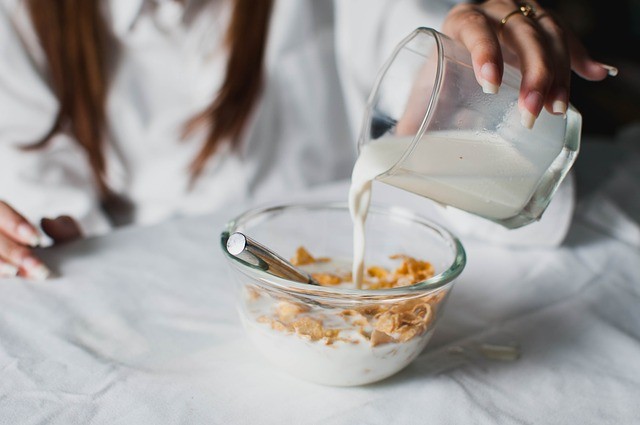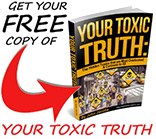Did you know that some of the cereal brands that claim to be healthy aren’t really healthy at all? Learn how the cereal industry fools you into buying cheap ingredients disguised as health food. Check out this amazing article we found over at Food Babe written by the awesome Vani!
I’ve always loved cereal and as a child I downed bowls of Golden Grahams for breakfast and sometimes dinner too. When I grew up, I ate Fiber One on top of my yogurt while sitting in my cubicle at work. I thought it was very healthy for my body (because of all that fiber and would help me lose weight), and just didn’t understand why I didn’t look and feel my best after eating it. Thankfully I found much healthier cereal later in life but before I tell you about my favorite kinds, we must discuss what is really going on in the “healthy cereal” industry.
It’s estimated 94% of us have cereal in the cabinet – but a century ago hardly anyone did. Cereal was the first processed food, making life easier for Americans (and now for people all over the world). Cereal requires no cooking, no skills, and it’s just about as easy as you can get. We want everything to be quick and easy, and this has become an epidemic in this country. This is why cereal has been called the biggest success story of the modern food industry, and as put by author Michael Pollan, “Breakfast cereals in many ways are the archetypal processed food product of modern capitalist food economics”.
But, when you take a hard look at cereal, what is it really?
In reality, the cereal industry is making billions selling us cheap commodities like corn and sugar, mixed with cheap additives like artificial colors, dumped into a colorful box with cartoon characters. Mainstream cereals are so heavily processed that they do not have natural nutrients, that’s why most of them are sprayed with vitamins, minerals, and sometimes fortified with protein. It’s the ultimate fake food.
You’ll likely find these GMO ingredients in mainstream cereals:
- GMO sugars – Such as beet sugar, fructose, brown sugar, molasses, corn syrup, dextrose. At least one of these sugars is in most cereals including Wheaties, Cinnamon Toast Crunch, and Mueslix.
- GMO corn – Most of the corn grown in the U.S. is genetically modified to resist pesticides, and is itself registered as a pesticide with the EPA. Testing by Consumer Reports last year found GMOs in several cereals made from corn: Corn Chex, Kix, Trix, Froot Loops, Cocoa Puffs, and Life cereal.
- GMO vegetable oils – As found in Bear Naked Granola (owned by Kellogg’s), Apple Cinnamon Chex, Smart Start, Apple Jacks and Berry Berry Kix.
- Synthetic Vitamins – All those wonderful vitamins that you’re ingesting in your cereal probably aren’t natural, and just lab-created vitamins made from a variety of sources like coal tar, petroleum or GMOs. This is why some vitamins disappeared from Cheerios and Grape Nuts when they received non-GMO project verification. These vitamins aren’t believed to be absorbed by your body as well as natural vitamins that you get from food. Recent testing by the EWG found too many vitamins and minerals in some vitamin-fortified cereals, in seriously dangerous levels – especially for kids. You’ll find synthetic vitamins in fortified cereals, but especially in Total, Wheaties Fuel, and Product 19.
- Artificial Sweeteners – They are low calorie, but they may slow down your metabolism and “train” you to crave sweets. Look for aspartame, sucralose, and acesulfame potassium on the label. These lower the total amount of “calories” and “sugars” listed on the nutrition fact label so they’re sometimes found in cereals marketed as healthy like Special K Protein and Fiber One.
You’ll also want to watch out for “non-GMO” cereals like those made by Kashi that contain several ingredients that were likely extracted with the neurotoxin hexane (and may contain residues), such as soy protein isolate and defatted soy grits. Kashi also uses canola oil which is processed to death and not the most nutritious form of fat.
If you love cereal, here’s how to pick the most nutritious ones:
Keep in mind that just because a cereal is labeled non-GMO or organic, it may not be made with nutritious ingredients – you still want to read those ingredient lists! Look for those that don’t contain any of those unhealthy ingredients mentioned in this post, and choose cereals that are minimally processed and made with real food: seeds, nuts, and dried fruit. Also don’t fall for the “Natural” label as those can still contain GMOs, loads of additives and synthetic pesticide residues.
My favorite packaged cereals:
2 Moms In The Raw Cereal – This grain-free cereal is full of healthy fruit and nuts like almonds, walnuts, bananas, coconut, and dates.
Ezekiel 4:9 Sprouted Grain Cereal – The grains in this cereal are whole and sprouted, so they are easier for your body to digest and won’t spike your blood sugar like flour-based cereal grains do. My favorite is their cinnamon raisin flavor.
One Degree Sprouted Brown Rice Crisps or Erewhon Crispy Brown Rice Cereal: Either of these make an excellent replacement for Kellogg’s Rice Krispies, and are BHT-free.
Next Article: Are Your Kids Eating Froot Loops Cereal or Round UP?
Read full article: Beware Of This Head Fake: Healthy Cereal That Isn’t.







Jocelyn Smith
Oct 02. 2015
I had a lot of anxiety, and eating too much, was much above my weight, but now in 2015 I followed a great weight loss program and lost weight 28 pounds I found it all here on this site ROG9 .COM